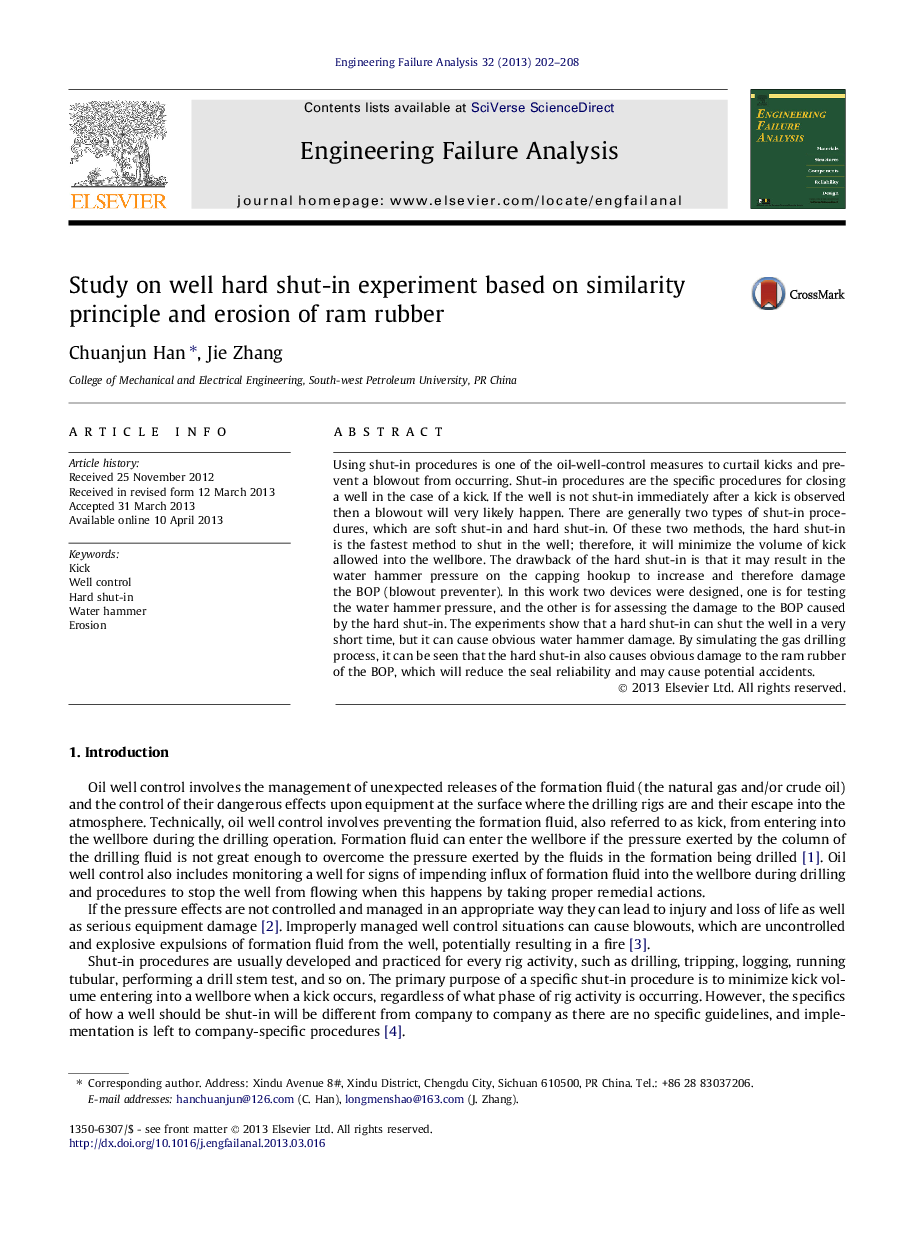| کد مقاله | کد نشریه | سال انتشار | مقاله انگلیسی | نسخه تمام متن |
|---|---|---|---|---|
| 774074 | 1462992 | 2013 | 7 صفحه PDF | دانلود رایگان |

• A device was created for testing the water hammer pressure based on similarity principle to simulate well hard shut-in.
• An experimental gas drilling system was built to evaluate damages to the rams’ rubber.
• Hard shut-in could cause obvious water hammer pressure which was less than the BOP’s limit.
• Fast fluid with solid particles brought visible damages to the rams’ rubber in shut-in process.
Using shut-in procedures is one of the oil-well-control measures to curtail kicks and prevent a blowout from occurring. Shut-in procedures are the specific procedures for closing a well in the case of a kick. If the well is not shut-in immediately after a kick is observed then a blowout will very likely happen. There are generally two types of shut-in procedures, which are soft shut-in and hard shut-in. Of these two methods, the hard shut-in is the fastest method to shut in the well; therefore, it will minimize the volume of kick allowed into the wellbore. The drawback of the hard shut-in is that it may result in the water hammer pressure on the capping hookup to increase and therefore damage the BOP (blowout preventer). In this work two devices were designed, one is for testing the water hammer pressure, and the other is for assessing the damage to the BOP caused by the hard shut-in. The experiments show that a hard shut-in can shut the well in a very short time, but it can cause obvious water hammer damage. By simulating the gas drilling process, it can be seen that the hard shut-in also causes obvious damage to the ram rubber of the BOP, which will reduce the seal reliability and may cause potential accidents.
Journal: Engineering Failure Analysis - Volume 32, September 2013, Pages 202–208